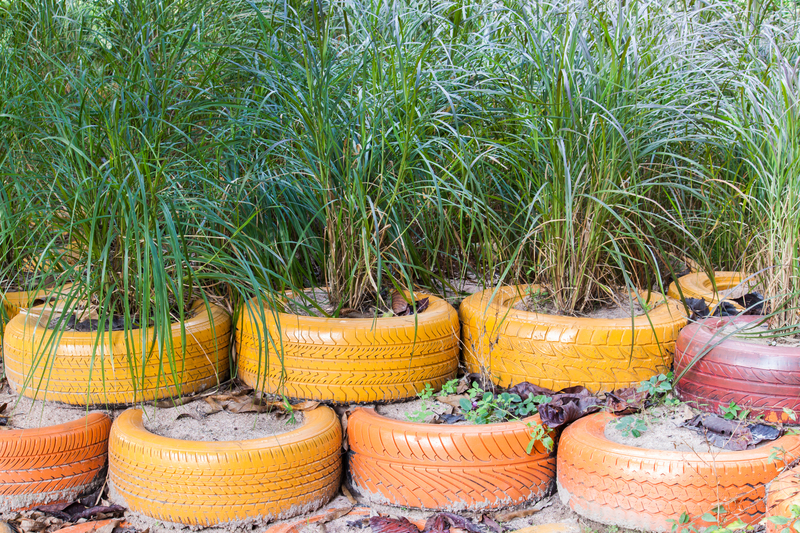Understanding the Importance of Proper PPE Waste Disposal
The global outbreak of diseases such as COVID-19 has drastically increased the use of personal protective equipment (PPE) in healthcare industries and daily life. However, as the utilization of masks, gloves, gowns, and face shields has surged, so too has the generation of PPE waste. Failing to dispose of these items responsibly has ecological, health, and regulatory consequences.
In this comprehensive article, we will explore the critical role proper PPE waste disposal plays in maintaining public health and protecting our environment. You will discover the risks associated with improper disposal, methods for safe handling, environmental impact, regulations, and innovative solutions shaping the future of PPE waste management.

What is PPE Waste?
Personal protective equipment waste encompasses any used or discarded protective gear designed to prevent infection or chemical exposure. The most common items include:
- Masks (surgical, N95, reusable, disposable)
- Gloves (latex, nitrile, vinyl)
- Face shields and goggles
- Gowns and aprons
- Shoe covers, caps, and other protective wear
These items, after use, are considered potentially hazardous due to their possible contamination with infectious microorganisms or dangerous chemicals.
Why is Proper PPE Waste Disposal Necessary?
1. Preventing Public Health Risks
Improperly disposed PPE can directly contribute to the spread of infectious diseases. Discarded masks and gloves left in public spaces or mixed with regular trash can harbor viruses, bacteria, or hazardous chemicals. Unprotected collection, handling, and transport of these materials increase the risk of cross-contamination among sanitation workers, waste handlers, and the general public.
- Protection of Frontline Workers: Sanitation and waste management staff are at increased risk if exposed to contaminated PPE waste. Ensuring safe, segregated disposal minimizes their exposure.
- Community Health: Improperly disposed PPE can be picked up by children or animals, increasing the chance of disease transmission in communities.
2. Environmental Considerations
With millions of PPE items used worldwide every day, the cumulative environmental impact is enormous. PPE waste often contains plastics and synthetic fibers, which are slow to decompose. When these items end up in landfills, incinerators, or are littered in natural environments, they contribute to:
- Microplastic Pollution: Disposable PPE, especially masks and gloves, are a major source of microplastics entering soil, rivers, and oceans. These microplastics can harm aquatic life and enter the human food chain.
- Habitat Destruction: Wildlife can become entangled in disposed PPE, leading to injury or death.
- Increased Landfill Burden: Non-biodegradable PPE occupies significant landfill space, contributing to long-term environmental degradation.
3. Legal and Regulatory Compliance
Authorities and health agencies at global, national, and local levels have established specific guidelines for the segregation, collection, and disposal of medical and hazardous waste, including PPE. Failing to adhere to such protocols can result in:
- Fines and legal penalties
- Closure of non-compliant facilities
- Reputational damage
Following PPE waste disposal regulations is not merely a best practice--it's often a legal obligation.
Risks Associated with Improper PPE Waste Disposal
The repercussions of mishandling PPE waste extend beyond visible litter. Key risks include:
- Disease Spread: Used PPE may carry pathogens which, upon improper disposal, can infect humans and animals.
- Wastewater Contamination: PPE thrown down toilets or drains can clog systems and introduce contaminants into waterways.
- Increased Workload on Waste Management Systems: Large volumes of incorrectly sorted PPE create operational burdens, leading to dangerous backlogs.
- Damage to Incinerators: Inappropriate materials in incineration facilities can result in fires, mechanical failures, and release of toxic gases.
Best Practices for Proper PPE Waste Management
Segregation at Source
The most crucial step in effective PPE waste management is segregating these items from regular household or workplace waste. Designated bins or bags (preferably red or yellow) should be clearly marked for the collection of used personal protective equipment.
- Healthcare Facilities: Use color-coded, leak-proof, and puncture-resistant containers for PPE waste, following local guidelines.
- Public Spaces & Offices: Place separate waste bins for masks and gloves at entrances, exits, and high-traffic zones.
- Homes: Double-bag used masks, tissues, and gloves. Seal and dispose with household waste if no hazardous waste collection is available, ensuring they are secured from children and animals.
Proper Handling and Personal Hygiene
Avoid touching the potentially contaminated surfaces of used PPE. Always wear gloves when disposing of personal protective equipment and wash your hands thoroughly after handling.
- Never attempt to reuse disposable PPE.
- Avoid compacting PPE waste by hand or foot to reduce risk of exposure.
Safe Storage and Transport
Store PPE waste in sealed bags or containers, away from areas where people eat, drink, or congregate. Ensure that storage areas are secure and not accessible to unauthorized personnel or animals. Transport should be conducted by trained waste handlers equipped with adequate PPE.
Environmentally Responsible Disposal Methods
The following methods are commonly recommended for the eco-friendly disposal of PPE waste:
- Incineration: High-temperature incineration can effectively destroy pathogens and reduce the volume of PPE waste, but care must be taken to control emissions.
- Autoclaving: Steam sterilization can decontaminate PPE waste prior to landfill disposal or further processing.
- Landfilling with Precautions: PPE waste can be landfilled after decontamination. Secure and lined landfills are necessary to prevent environmental contamination.
- Sustainable Alternatives: Research is ongoing into biodegradable PPE products that can be composted, reducing landfill pressure.
Global Regulations and Recommendations
Major organizations, such as the World Health Organization (WHO) and the Centers for Disease Control and Prevention (CDC), have issued recommendations for the management of medical and PPE waste. Key points include:
- Use of double-layered bags for waste collection.
- Strict labeling and color coding of PPE waste containers.
- Regular disinfection of waste storage and collection areas.
- Mandatory training for waste management workers in safe PPE waste handling.
- Periodic audits and updates to waste management protocols.
Innovations and Alternatives: Reducing PPE Waste at the Source
As the scale of PPE waste becomes unsustainable, various industries and researchers are seeking innovative solutions to reduce both generation and environmental impact.
Reusable PPE Options
Reusable masks and gowns, made from durable, washable materials, offer a more sustainable alternative to single-use products. Proper decontamination and laundering processes ensure these items remain safe and effective across multiple uses.
Biodegradable and Compostable PPE
Scientists are developing PPE from natural fibers such as bamboo, hemp, and bio-based plastics. These products decompose more quickly than conventional plastics and can be composted in suitable facilities, drastically reducing landfill volumes and microplastic pollution.
Recycling and Upcycling Programs
Some organizations are piloting recycling programs for certain types of PPE. For example, clean non-infectious masks and gowns can be processed into building materials or repurposed into other products through advanced technology. However, challenges remain due to contamination risks and sorting complexities.
The Role of Education and Community Engagement
Sustained change in PPE waste management requires widespread understanding and participation. Individuals, businesses, and healthcare facilities must be educated on the importance of proper PPE waste disposal and empowered to act responsibly.
- Public campaigns can raise awareness about the dangers of littering PPE and teach proper disposal techniques.
- Signage in public spaces can remind people to use designated bins for used personal protective equipment.
- Schools and workplaces should incorporate safe disposal practices into their health and safety curriculums.

Frequently Asked Questions About PPE Waste Disposal
Can household PPE waste go in regular trash bins?
While some localities allow double-bagged household PPE waste in regular trash, others require hazardous or medical waste collection. Always check and comply with your local guidance for safe PPE waste disposal.
Can PPE be recycled?
Most single-use PPE items cannot be recycled in conventional systems due to mixed materials and contamination. Specialized programs and research into recyclable PPE are ongoing, but for now, proper segregation and disposal remain paramount.
What should businesses do about PPE waste?
Employers must provide clearly labeled PPE waste bins, train employees in safe disposal, and contract with licensed waste management services for collection and processing. Documenting disposal practices is also recommended for regulatory compliance.
Key Takeaways: The Significance of Responsible PPE Waste Disposal
- PPE waste, if mishandled, poses serious health and environmental risks.
- Proper segregation, handling, and disposal are essential steps in breaking the chain of infection and preserving environmental quality.
- Legal obligations require businesses and healthcare facilities to adhere to established PPE waste disposal regulations.
- Innovative products and public education can help reduce PPE waste generation and improve disposal behaviors.
In conclusion, understanding the importance of proper PPE waste disposal is not just about individual responsibility--it is a collective effort crucial for safeguarding public health, maintaining clean environments, and fighting the spread of diseases. By adopting best practices and supporting sustainable innovation, we can all contribute to a safer, healthier, and more sustainable world.
